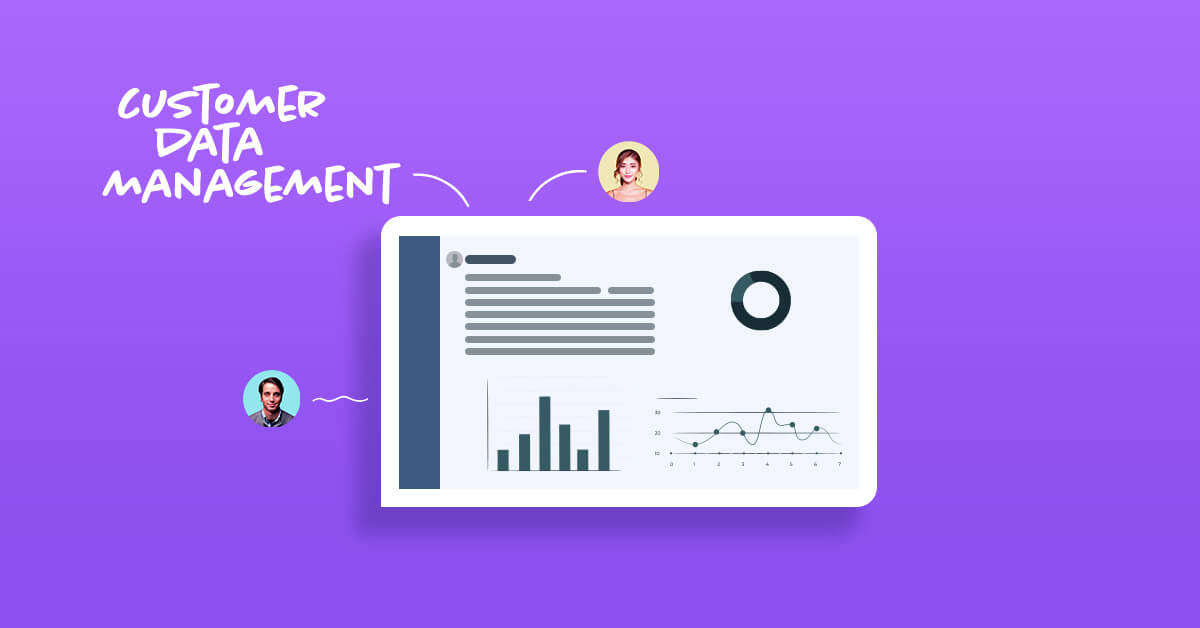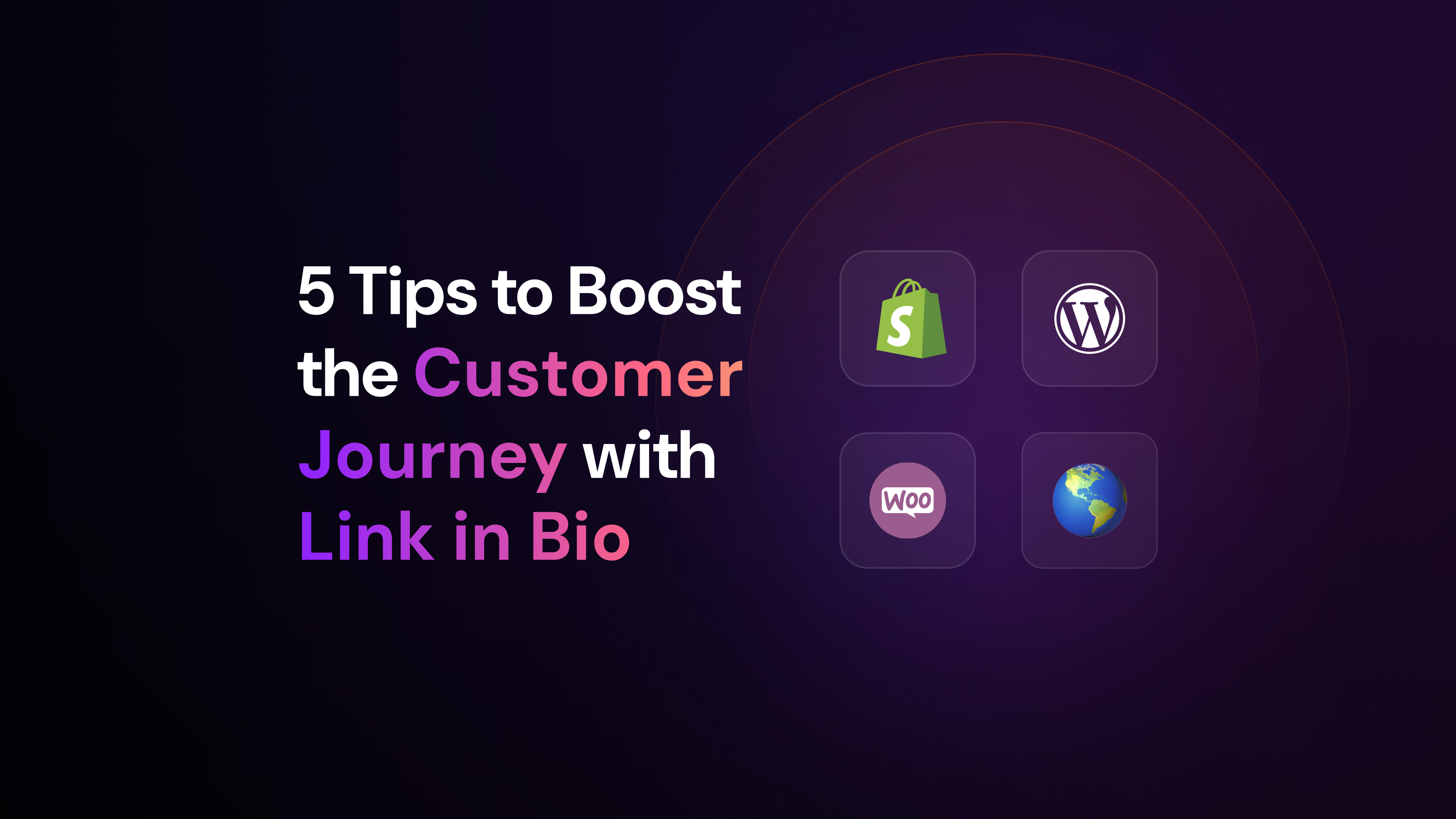This guide will teach you how to use data frameworks to offer differentiated customer experiences and optimize marketing ROI.
It has been a few years since the buzz around “Big Data” started. Working with marketing in the media space, you probably hear your peers bragging about their data-driven strategies a lot. Do you consider yourself a data-driven marketer too?
Beyond marketing, modern CMOs have had to assimilate abilities in information technology and customer data management. In 2020, you should expect most marketing teams to effectively use customer data to drive growth and customer satisfaction.
Getting there can be quite a journey, though. Research from the Dentsu Aegis Network from 2018, made with 1,000 CMOs, shows that to two-thirds agree that while there is increasingly more consumer data available, it’s harder to extract insight from it.
Another report from Harvard Business Review shows that less than half of an organization’s structured data is actively used in making decisions, while less than 1% of its unstructured data is analyzed or used at all.
Historically, companies have relied on excel sheets and on manually storing and analyzing customer data through different software, with little to no integration. No offense to excel and isolated systems, but things have changed.
The amount of customer data flowing to companies’ databases continues to rise through new channels and platforms, and that’s where customer data management comes to play. More than ever, organizations need a complete set of practices and automation tools to help them manage customer information.
In this article, we will talk about the importance of having customer data management on top of the marketing agenda. We’ll also explore the types of data, best practices for data management, and the role of different data software in data management.
What is customer data management?
Customer Data Management, shortly known as CDM, is the framework in which companies collect, track, organize, analyze and share customer data throughout the organization.
The term “Customer Data Management” was coined in the 1990s, initially as a way to describe software that replaced disc-based or paper-based data storage. Such software was often used independently by departments within companies.
The concept of CDM evolved along with the Software as a Service (SaaS) industry and nowadays embraces a wide array of cloud computing applications that centralize access to customer data. It also embraces a set of methodologies that help marketers to locate, cross-analyze, and act on customer data.
Why marketers should invest in customer data management?
In a scenario where customers interact with brands through dozens of channels, there is almost no room for guessing and gut-feeling in marketing. Having a good hunch about what will engage audiences is not enough, and so the role of customer data management is to provide companies with accurate and actionable insights.
It reduces your chances of making mistakes, since mismanaging your customer data can lead to actions that will ultimately reduce engagement and profitability. Additionally, using customers’ data in a biased, inaccurate way can lead to poor customer experience (CX) and harm your brand.
Good customer data management is key to building a data-driven culture and bolstering customer-centricity in marketing. Isn’t it everything you wish for?
Data Management strategies can bring marketers a holistic view of customers’ journeys, connecting the dots between different channels, and offering cues to enhance their experience.
Customer Data Management is important for:
- Customer acquisition
- Increasing retention and engagement rates
- Knowing customers in detail and in real-time, from individuals to clusters
- Increasing data quality by breaking data silos
- Simplifying customer relationship management (CRM)
- Drive higher revenue
How customer data management is connected to customer lifetime value (CLV)
Having well-structured customer data management practices is what allows marketing teams to follow up on important indicators, like the Customer Lifetime Value (CLV).
Amidst a seemingly chaotic user journey – with different channels, devices, and purposes – customer data management can help marketers understand customers and guide them through the conversion funnel.
Collecting and organizing relevant customer data will allow you to better segment your audience, find out behavior and buying trends, and drive personalized campaigns. As a result, marketers can ultimately attract more qualified leads and reduce customer acquisition costs (CAC) – improving overall marketing ROI.
But customer data management is useful only for marketing. It can help sales, IT, and customer success manages customer touchpoints. The great news is that every department can have access to the same data and deliver a consistent, unfragmented user experience.
Four Types of Data to pay attention to
Before trying to set up a data management framework, your team should have a roadmap of data types and specific information that can enrich your strategy, according to your business goals.
We will now explore four data types and a few examples for each.
1) Identity Data
Identity data is collected through micro-transactions and interactions in the company’s channels – when a customer signs up for a newsletter or enters their payment information on the checkout page.
By collecting customers’ identity data, marketers have the minimum amount of information to start a conversation (and hopefully a long relationship) with the customer. Such information is also helpful to help companies build brand personas.
Examples of identity data: Name; Personal data (date of birth, region, gender, etc); Address; Contacts; Social media profiles; Account data.
2) Quantitative Data
Quantitative data is mostly related to the customer’s decision making process as they interact with your brand. Such data covers different channels throughout the customer lifecycle, from emails and customer support channels to purchase transactions and social media.
The idea is to understand the specifics of how customers are interacting with your brand through important operational data. You could use quantitative data to find out details about channel interactions and steps that led customers to convert.
Examples of quantitative data: Transactional data, such as the number of purchases, time of purchase and subscription value; Order dates; Cart abandonment and Bounce info; Click-through-Rates; Website visits; Product views; Number of Interactions.
3) Descriptive Data
Descriptive data comprehend additional lifestyle information that complements customer personas. Collecting this type of data typically requires doing deeper research and interviews with customers in order to dive into individual buying behavior. Such data is pretty helpful if you want to use predictive analytics in your marketing strategy.
Examples of descriptive data: Family Data such as marital status and number of children; Lifestyle data, like hobbies and interests; Education and career data.
4) Qualitative Data
Qualitative data should describe the motivations behind the customer’s actions. Gathering such insights might be more time-consuming and expensive than simply collecting quantitative data, but it is worth it. After all, tackling into customers’ deepest motivations is how you’ll captivate them.
This type of data is better collected on a one-to-one basis, mainly through the marketing teams’ interpretations of customers’ opinions throughout their journey – through analyzing CRM notes or reviews in websites, social listening tools, feedback questions, and Net Promoter Score (NPS) systems.
Best practices in customer data management
An effective customer data management framework requires marketers to make human and tech investments, have well-defined processes and priorities. We have picked a few key practices involved CDM:
Data collection
A lot of the data within enterprises go unused, and so data collection is the first step in building an integrated customer data management strategy. There are millions of data streams coming into companies’ systems from many touchpoints, and so marketers need to make sure relevant data doesn’t go to waste.
It’s important to understand what data needs to be ingested. Ask yourself: What goals do I want to achieve with my marketing strategy? Which data points are directly or indirectly related to my Key Performance Indicators (KPIs)? From there, you can start filtering your sources of data and the indicators you will track.
Data Integration
Centralizing all company’s data into a central system is also vital for customer data management. That enables the “ETL Process”, which stands for “Extracting, Transforming and Loading” data. This stage is where you will check your data integrity, filter it, and validate it.
A good data system will ingest relevant data, convert it in necessary formats and load it into different tools such as a data warehouse, a customer data platform (CDP), a data management platform (DMP), a customer relationship management (CRM) or any other system. The result? You will have a single hub for all the data you need.
Data management
This is where you connect the dots between data points to build robust, unified profiles of individual customers or segments. This could mean using statistic models to create identity graphs, applying data governance to make sure you integrate consent to customer data, or anonymizing data to be used through a data management platform (DMP).
Data analysis and activation
Data management tools: the difference between CRM, DMP, and CDP
Although customer Data Management can be described as a framework, it requires companies to have the right technologies.
Your data software stack could be more or less complex depending on the size of your business and the number of touchpoints with the customer, but, essentially, your CDM strategy will require a combination these platforms: a Customer Relationship Platform (CRM), Data management Platform (DMP) and Customer Data Platform (CDP).
Each one of them plays a role in your strategy. But what is the difference between them?
The basis of data management starts with customer relationship management systems (CRM), which are built to engage with customers by tracking their relationship with your company. They only store data if the customer has interacted with the brand in some way, and they are based on historical and general information such as contact, demographics, and notes made by CRM teams.
Data management platforms (DMPs), on the other hand, have been widely used by marketers to serve ads and lead digital campaigns. These platforms focus on third-party anonymized data collected through cookies (that typically expire after 90 days), device IDs, and IP addresses.
In a different model, a Customer Data Platform (CDP) is a software capable of unifying customer data from various sources, internal or external, gathering quantitative and qualitative information from multiple touchpoints between a company and its customer base. It allows you to build a holistic view of customers and their pain points in a granular way.
Why CDPs are the ultimate trend in customer data management
Although CRM systems, DMPs and CDPs share similarities, they are different when it comes to managing data. Customer data platforms, specifically, have increasingly been used as an integration hub for data systems because they are built to ingest large volumes of data from multiple sources – unlike CRM systems and DMPs.
There were days when marketing segmentation based on DMP persona segments and CRM was enough, but today, brands are expected to personalize every step in the customer journey – which is only possible through CDPs.
A study by Forbes shows that 53% of marketing executives are using CDPs to engage with existing customer’s needs, increasing the likelihood that they will become recurring clients.
The focus of CMOs is also shifting from third-party data and anonymous data to first-party, single customer data, which also underlines CDPs’ importance. As data privacy and compliance regulations arise, organizations also seek to work with their own, integrated data.
CDPs are capable of providing marketers with a historical record of identified customers that can be used not only for advertising but for other purposes as well. By centralizing information in a single platform, companies can optimize resources and avoid having to rework their data over and over through different systems.
Bonus tips for successful data management
Make data widely available to different teams: The Harvard Business Review study we mentioned before reveals that 80% of a data analyst’s time is spent on just discovering and preparing data. Customer data can be an important asset across departments, so it’s important to centralize access to it instead of storing it in separate departments and warehouses. Let the data flow!
Always keep data governance in mind: Understand the privacy policies of your data tools and ensure consent is integrated into all of your data collection, while also respected in marketing campaigns.
Don’t over-collect data: Understand exactly why you’re collecting the data your collecting, and which questions your company is trying to answer with them. Resist the impulse to gather too much data “just in case” you need it, without a proper purpose.
Create rules for data categorization: Set up file formats you’ll be using, standards for tags, file-naming, and timestamps. Such standards will make it easier for your team to navigate through the data.
Beware of new data sources: Pay attention to emerging data types, such as those from voice activation devices, geo-localization in smart devices, Internet of Things, Augmented and virtual reality platforms, etc. New data points will eventually require new processing and marketing frameworks.
Still want help defining your customer data management strategy?
Now that you have learned a bit more about customer data management, maybe your next step will be to study data management solutions.
If that is the case, we recommend you check out Arena’s customer data platform blog section to dive deeper into the subject. You can also get in touch with one of Arena’s consultants and learn the specifics about our CDP.



